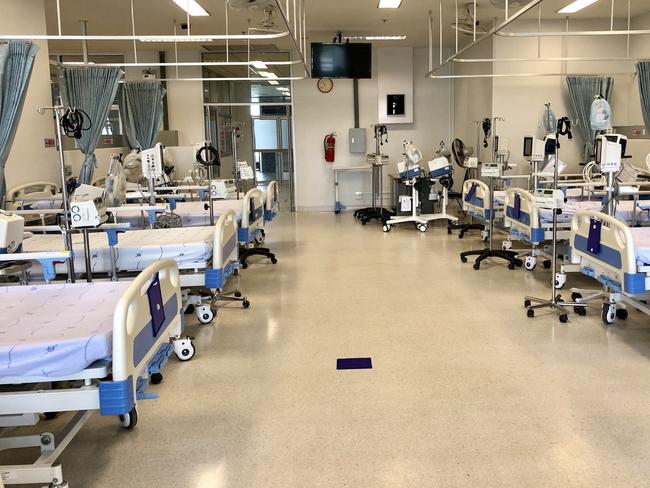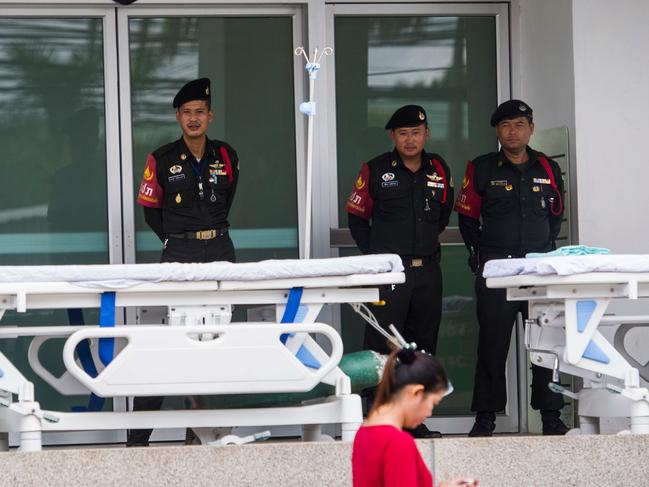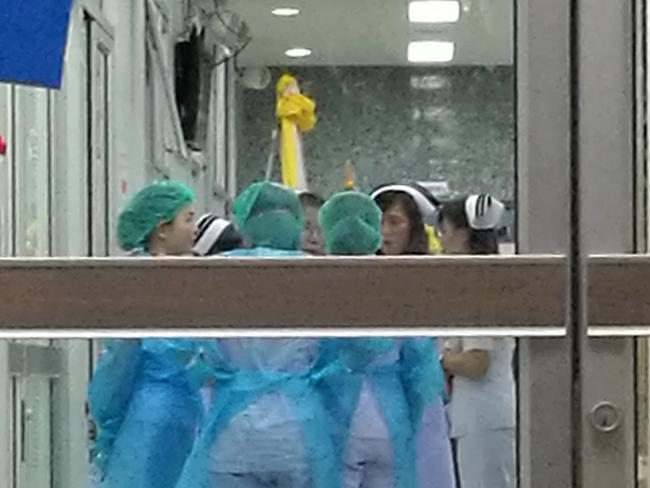Thailand cave boys face weeks fighting off fearsome infections once rescued and in hospital
THE parents of the first four boys to escape a flooded Thai cave are set to be reunited with their children. But they’ve been strictly told no hugging or kissing. It could prove fatal.
World
Don't miss out on the headlines from World. Followed categories will be added to My News.
THE boys rescued from a flooded Thai cave face a weeks’ long wait to find out if they’ve escaped three deadly infections common to their tropical, wet landscape.
A Chiang Rai Health official has told Thai media the parents are now welcome to meet the four boys rescued by divers from the Tham Luang Nang Non caves last night.
“Visitors will only be allowed to meet and talk to the patients,” Dr Thongchai Lertwilairattanapong warned. “No hugging or touching and they need to leave a one to two metre distance from the patients until the results of their blood tests come back.”
LIVE UPDATES: Follow the Thai cave rescue
MORE: Why Thai cave parents are being kept in the dark
MORE: What can still go wrong in the Thai rescue mission
MORE: Elon Musk’s radical plan for Thai boys



One threat is leptospirosis.
This is a bacterial disease transferred through animal urine.
And all it takes is a small cut or graze for infection to enter the body.
It takes between 2 and 30 days following infection before symptoms can emerge.
It looks like influenza, so diagnosis can be difficult.
Complications can include kidney failure, jaundice and haemorrhaging — and meningitis.
It can be fatal. But chronic-fatigue like symptoms often persists for months.




Another threat is histoplasmosis.
Dubbed ‘cave disease’ and ‘spelunker’s lung’, its caused by breathing in spores produced by fungus thriving among bat dung.
Some three to 17 days after being exposed, symptoms may arise. Usually after a mild fever, chills, muscle aches and a few coughs, it passes. But for those with compromised immune systems, it could produce tuberculosis-like symptoms.
Untreated, it can be fatal.


And then there’s melioidosis.
It enters the body through cuts and sores, as well as by inhaling dust or droplets.
It’s particularly hard to diagnose as symptoms vary.
As an infection of the lungs it can produce bronchitis or severe pneumonia. Most dangerously, it can spread through the body to the heart, brain, liver, kidneys and eyes.
Symptoms usually appear up to three weeks after exposure to the bacteria. In some cases, however, it could be months or years after the initial infection.
Originally published as Thailand cave boys face weeks fighting off fearsome infections once rescued and in hospital


